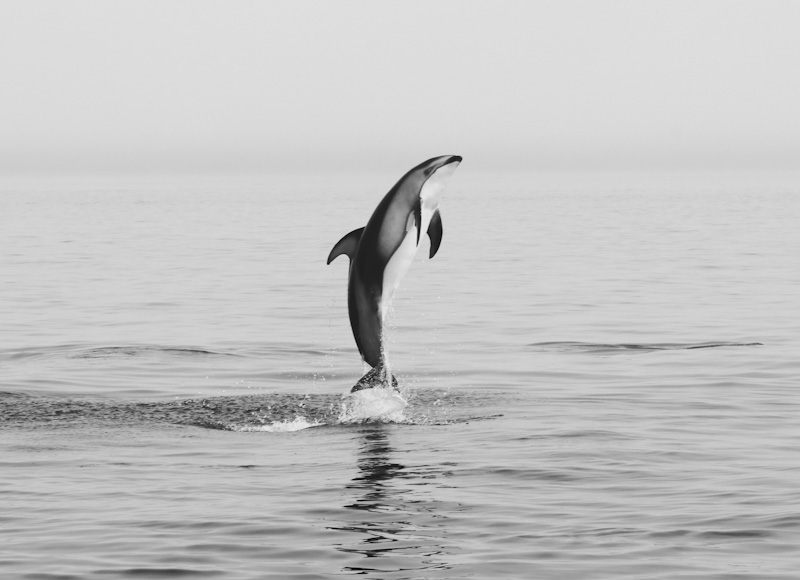In August, part of our team traveled to the Broughton Archipelago off the coast of northern Vancouver Island to continue our long-term study on Pacific white-sided dolphins. This study is multi-faceted. We are studying the health of the population by taking dorsal fin photos for statistical analysis, but we are also studying the health of individuals by looking for pathogens in exhaled breath. We’ve just celebrated the 10th anniversary of this study, but we made a few changes along the way. This year, with the help of Alimosphere, we were able to look at dolphin pods we encountered from a new perspective through the use of Unmanned Aerial Systems (UAS), also known as drones.
[KGVID]https://oceansinitiative.org/wp-content/uploads/2018/09/WISHART-1.3-Back-and-Side-Audio.m4v[/KGVID]
This year, we are sponsoring our research associate, Natalie Mastick, to start an exciting PhD project in marine parasite ecology. As she explains in a recent blog post, taking photos of dorsal fins is a non-invasive way to study the population that allows us to identify individuals that we can use as statistical samples in models to estimate survival rates, and population size and trends. High-resolution dorsal fin photographs show us distinguishable details such as nicks, scars, and markings that help us to recognize individuals from year to year. The Pacific white-sided dolphin study launched by our co-founder, Dr Erin Ashe, has involved taking, processing and matching dorsal fin photos to previous catalogues since 2007. Some individuals have been seen in the study area since the 1990s, and we have seen one pair of dolphins together on two occasions 17 years apart.

As a continuation of a study started by Erin in 2015, we also spent much of our time collecting exhaled breath samples from these dolphins. We collect breath samples by positioning a long pole with a petri dish attached to one end over a dolphin as it surfaces and exhales. This is a tricky activity that involves a knowledge of dolphin surfacing patterns, careful boat handling, precise timing, and skillful maneuvering on the bow of the boat. Despite the difficulty, our team was able to collect many breath samples that we will use to assess the pathogens (e.g., viruses, bacteria and fungi) this population has been exposed to. Ultimately, we aim to let the health of the dolphins tell us something about the health of their environment. Understanding how pollutants impact marine mammals and their habitat is essential to informing recovery efforts and monitoring ecosystem health.

Next year, we are hoping to invite Alicia Amerson from Alimosphere to the Pacific Northwest to join us in the field again for a workshop on using UAS for noninvasive marine mammal research. We aim to offer this opportunity to other women in marine mammal science, and to our entire staff. We hope this will provide us with a new tool for collecting breath samples in the future, in a continuation of our efforts to use minimally invasive field research techniques. As we close out our field season, we are so thankful for the support we have received to do this important work.
